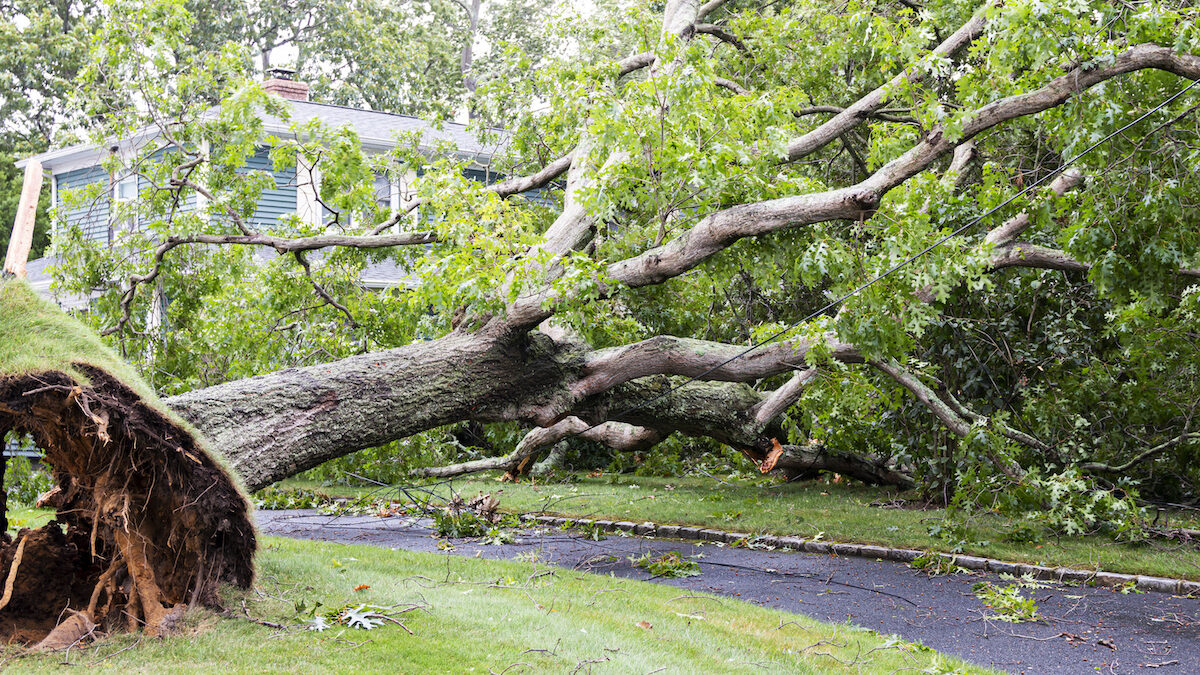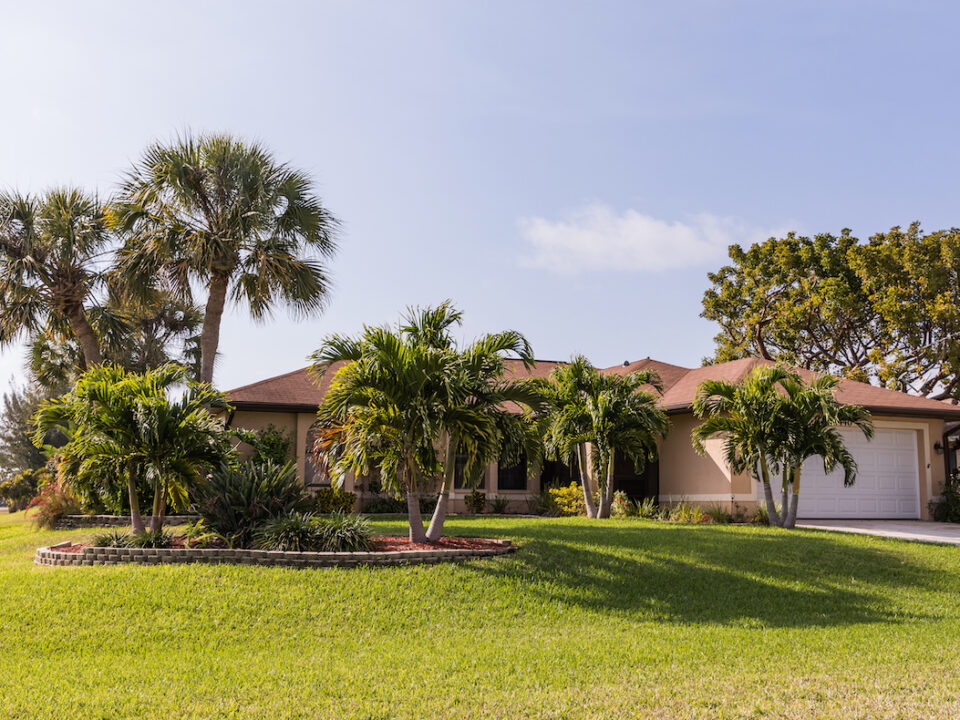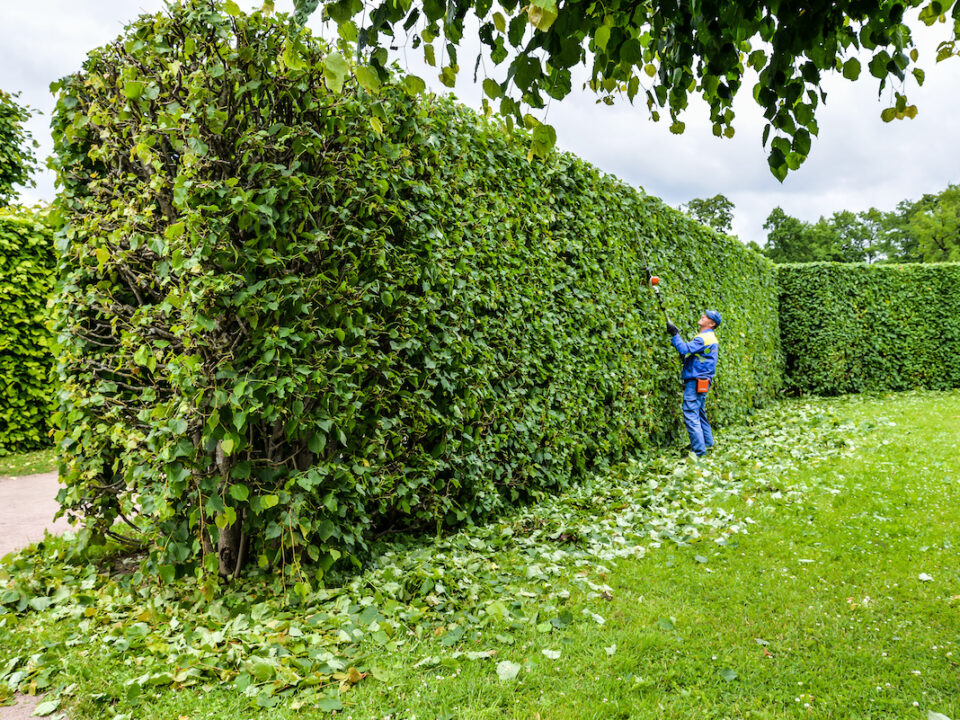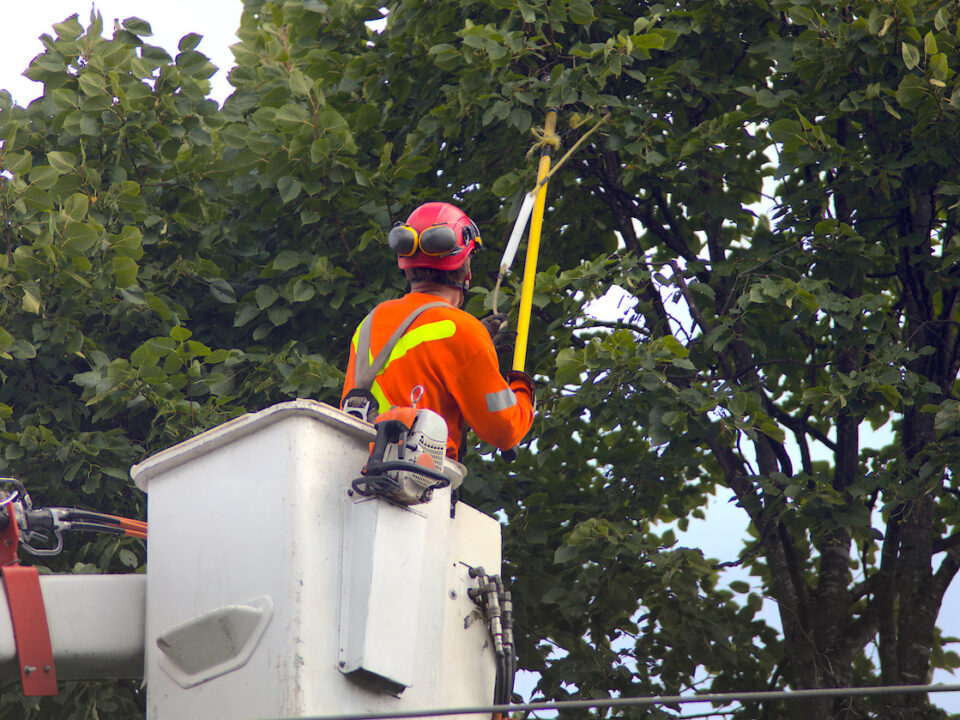Here in Florida, we get our share of hurricanes and tropical storms. Whether it is a level 5 hurricane or a tropical cyclone, the reality is that many trees will suffer damage in this kind of weather. Hurricane tree damage can cause a myriad of problems, some of them being extremely costly to your home while causing insurance premiums to rise.
Serving residents just like you for many years, we know a thing or two about hurricane tree damage. In this blog, we will cover what you need to know about tropical storm and hurricane tree damage. We will also help you determine whether the tree can be restored or if it needs to be removed.
The Link Between Local Trees and Hurricane Protection
As we talk about hurricane tree damage, let’s take a minute to discuss the urban forest and how trees Provide hurricane protection. An urban forest consists of all trees in the community. Many trees are planted as individuals in urban environments. But a healthy urban forest is managed as an entire ecosystem. These trees create shade, which helps to lower temperatures in neighborhoods and cities during the summer. It can also help reduce rain storm runoff and prevent or minimize flooding.
It is important for cities to manage trees properly, as they provide many benefits to homeowners. This includes protections to highways, and yes, even hurricanes.
However, after a hurricane, a community can look to rebuild and plan an urban forest to help with storm damage in the future.
A healthy urban forest look something like this:
- Trees are intentionally planted to help conserve and lower energy bills
- Surrounding trees in the community help to increase property value
- Specific species of trees at large canopies can provide shading and cooling
- Trees within the urban forest help to improve air quality and health benefits
- Urban forests are able to reduce erosion along with flooding
- Many different species of trees will help to mitigate hurricane force winds
Now that you know why trees are so important when it comes to the function of the local community as well as preventing hurricane damage, let’s talk about the steps for cleaning up after a hurricane and even assessing the damage.
Assessing Hurricane Tree Damage
Let’s say that a hurricane just came through, and you are walking outside to see how much damage there is in your property. Right after a tropical storm or hurricane, you need to decide what you should do with hurricane tree damage. Some damage to trees is devastating, but there are other circumstances where the tree can still survive with the proper care.
Meanwhile, some trees may not require any type of treatment or restoration at all, allowing you to leave it alone.
There are two options to consider when it comes to hurricane tree damage. You can either remove the tree or restore it. Deciding which action to take depends on the extent of the hurricane tree damage as well as the species of tree.
These are some general guidelines that will help you determine and assess damage to trees after a hurricane, along with deciding what to do.
When to Restore a Tree After a Hurricane
Even if the tree appears to have undergone quite a bit of damage after the hurricane, hope is not essentially lost. Trees can be restored after a hurricane, but only if they still have major limbs, trunk, and roots intact. The tree should also not have cracks, decayed wood, or any bark inclusions.
Meanwhile, roots cannot be out of the ground. As long as the structure of the tree was strong prior to the hurricane or tropical storm, restoration is an option.
These are some other guidelines to consider when restoring a tree after hurricane damage:
- The tree canopy has lost a lot of leaves. When trees lose their leaves during a hurricane or tropical storm, they are usually not dead. The best course of action is to wait, as new leaves may grow by the following spring. Keep in mind that trees and even palm trees flooded with salt water will usually lose their leaves. You can irrigate to wash the salt out of the soil.
- If some major limbs are broken in decay resistant species, the tree can sometimes be restored. For example, Live Oak is a species that is good at resisting decay. This type of tree can be restored, even if there is major branch damage. Young trees that have branches that are less than 10 inches in diameter are easier to restore.
- If the tree is falling or leaning, it can be restored if the tree is small, recently planted, or has a trunk diameter of less than 4 inches. These trees can be stood back up or replanted. If the tree has fallen over and you want to lift it back up into place, this will likely require the help of a professional.
- Trees that have small branches that are broken or dead can usually be restored. Trees that have branches less than 4 inches in diameter are easy to prune and are quite likely to recover and survive.
- If a lot of the canopy is destroyed in decay resistant species, they can lose a lot of their canopy but still recover after a hurricane. Even if 75% of the small branches are broken or removed by the hurricane, it can still survive.
As you can see, there is plenty of opportunities to restore hurricane tree damage. You can bring your tree back to life with a little bit of work.
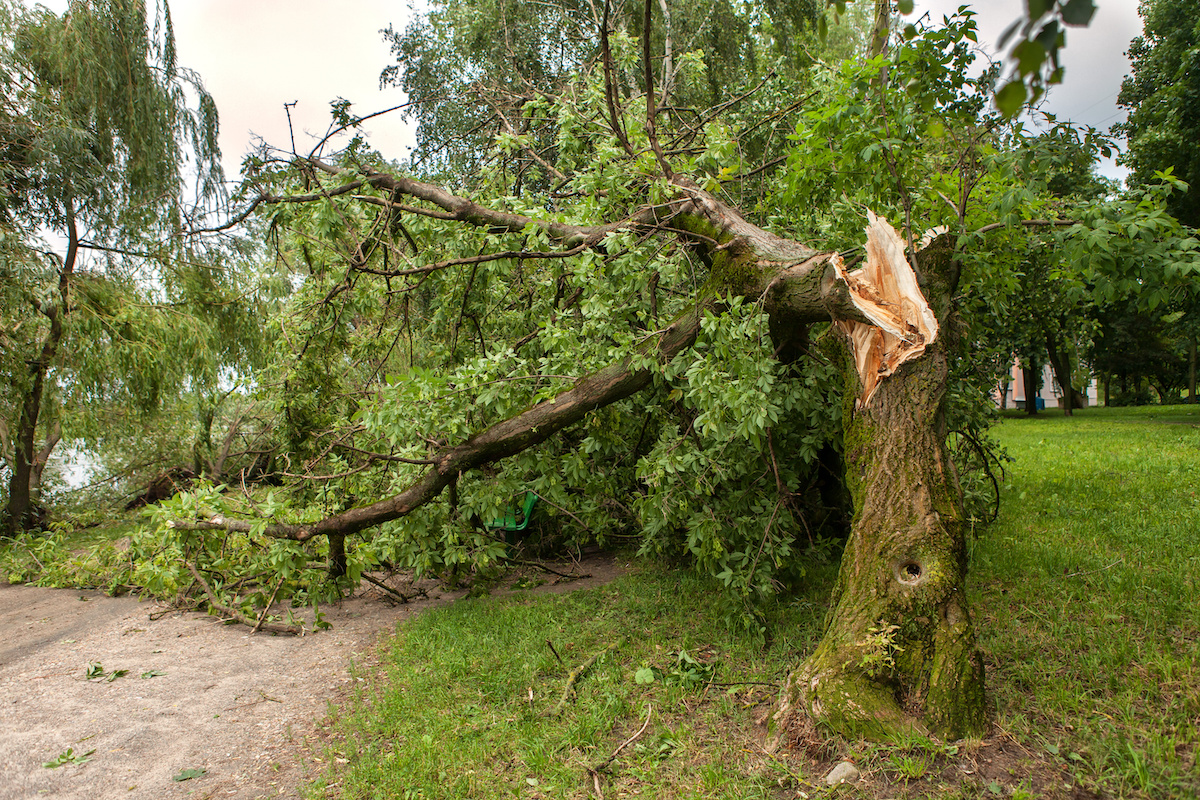
When to Remove a Tree after Hurricane Damage
While there is certainly a chance to restore many trees after hurricane damage, there are often times where you may need to consider removal. These are a few considerations to make when tree removal is necessary for the protection of your home:
- If the lower trunk of the tree is broken or cracked, this will likely require the removal of the entire tree. For example, if a tree has a large broken branch with a crack that extends into the trunk, the tree will need to be removed. This is because the remaining portion of the trunk is likely to fail.
- If there is a large stem that splits from the tree, removal should be considered. For example, bark inclusions create weak unions between the branches and are very susceptible to breakage.
- If major roots of the tree are broken or severed, removal is necessary for this instance. This is especially true for middle-age and older trees, as writing the tree can make it unsafe and unstable. Keep in mind that larger trees need large roots for proper support.
- If the tree is leaning toward a building, powerline, roadway, or other high value structures or items, removal of the tree is necessary in this case as well. This is because leaning trees typically have major breakage to the roots and are potentially unsafe.
- If the tree is highly likely to break at some point in the future, removal of the tree is necessary for the safety of everyone around it.
- If branches and limbs of the tree that are larger than 8 inches in diameter underwent damage, removal is necessary in this case.
Whether you need to remove or restore the tree, there are times when you can do it yourself but there are also situations where it is necessary to hire a professional. Safety is incredibly important no matter which route you decide to take.
Why Hire a Professional to Help with Tree Damage?
There are certain situations that require the help of a professional. For example, tree trimming services such from Warner have adequate equipment and insurance to handle hurricane tree damage.
We are equipped to take down trees as well as removing dead or hazardous limbs after hurricane tree damage. With the proper tools and experience on hand, hiring a professional greatly reduces the risk of injury or further damage to your property.
What can Warner Tree Service help you do with your trees?
- Tree trimming to help remove any dead or potentially dangerous limbs from falling or causing further breakage
- Tree removal, safely removing trees off of your property no matter the size or extent of damage
Even if it’s not hurricane season, we are happy to help with caring for your trees. There are many reasons why property owners need to trim and remove trees.
Trimming helps keep the trees healthy while promoting fruit growth in trees such as citrus, banana, and more. Meanwhile, sometimes trees are too close to your property and their roots pose a risk of damage, which calls for tree removal.
When in doubt about tree trimming or removal, even with hurricane tree damage, please contact Warner Tree Service for help!

